- Learning time
- 20 minutes
- First play time
- 100 minutes
Jaws
Designed by: Prospero Hall
As evidenced by the box, this is a game based closely on Steven Spielberg’s aquatic and rubbery-sharked 70’s thriller Jaws. In the game, one player plays the shark, and everyone else (1-3 players) take responsibility for the crew: Brody, Hooper and Quint.
The game takes place over two acts. Ultimately, the shark player wins by either destroying Quint’s boat, or eating all the crew. The crew win by killing the shark.
Act I takes place on Amity Island. The board goes island-side up and the crew take up their respective starting positions on it. The shark secretly decides their position in the surrounding water, and tracks it on a hidden note pad. A series of rounds play out, starting with the flip of an event card: this tells you which beaches to add swimmers to, and some additional information or criteria particular to this round only. The shark player goes first, taking three actions that are mostly just moving or eating swimmers, although it also has four one-off special actions it can take. Your goal – if you’re the shark – here is to eat as many swimmers as you can before you’re detected. Being mostly underwater, though, you’re hard to spot.
After the shark has written down their new location (secretly) and confessed to any swimmers they ate, the crew get to take 4 actions for each member, in whatever order they like. The basic actions are moving and saving swimmers by removing them from the board, but you have a greater objective at hand as well: to locate the shark. This is done using barrels – collected by Brody and Hooper, and used by Quint – that are shot out in hope or guesswork to random parts of the sea. If you hit the shark, the barrel attaches itself to the beast. Brody and Hooper have other deductive style actions (binoculars/fish tracker) to help you work out where the shark is, but once it’s hit by a second barrel (or the shark eats nine swimmers) Act I ends and Act II begins: flip the board to the other side and establish Quint’s boat using the eight jigsaw-style pieces (see pictures).
The purpose of Act I, as well as establishing the narrative, is determining which side of this contest starts in a stronger position in Act II. If the shark ate few swimmers, the crew have more equipment now, whereas if the shark had a successful Act I and consumed a big bunch of unlucky tourists, they begin with less.
Act II then sees the crew attempt to destroy the shark whilst the shark is after the crew, or the boat itself. In each round, three resurface cards are flipped over giving the shark options of where to attack (A, B or C). The shark player secretly decides which one, and whether they’ll play a card as well for a special move. Then the crew move into position and play targets to the part of the board they’re attacking (in the hope the shark will be there) before the shark reveals its position. The crew attack – doing damage, and/or potentially adding visibility to the shark – and then the shark counter-attacks, either damaging the crew or the boat (in which case, some of the crew may end up in the water!). There’s some asymmetry here in the crew’s equipment and how it works, but everyone’s wounds are recorded in the open: if the crew kill the shark, they win. If the shark wipes out the crew or the boat, the shark wins.
The guru's verdict
-
Take That!
Take That!
Well, you can be eaten. Or killed. And regularly shot at, or hit with a hammer.
-
Fidget Factor!
Fidget Factor!
Low - turns are pretty fast, and as part of the crew you'll be discussing plans anyway.
-
Brain Burn!
Brain Burn!
For the crew it's a tactical thing of how best to combine your disparate abilities (Act I) and equipment (Acts I and II) in a planned move and attack. Or as the shark, how best to avoid the incoming bludgeoning.
-
Again Again!
Again Again!
The game seeds in enough variables to prevent it ever being 'solved' - events in Act II, equipment and resurfacing cards in Act II.

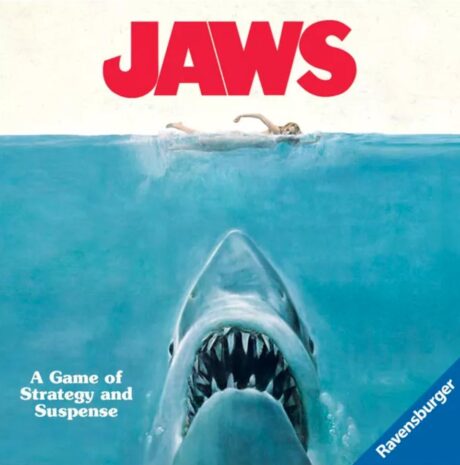
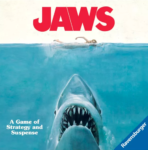
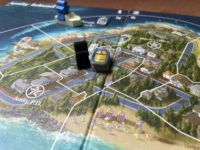
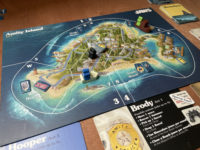

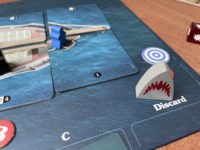
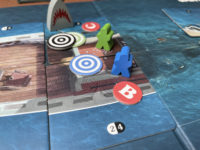


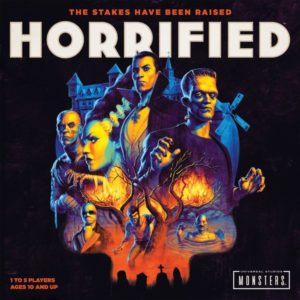
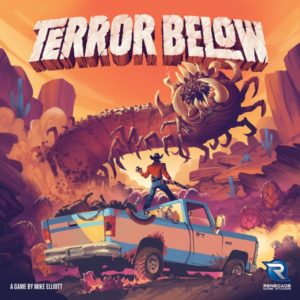

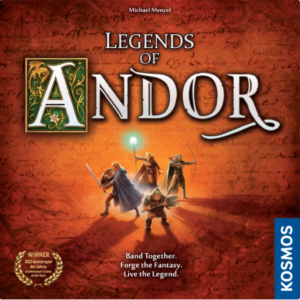
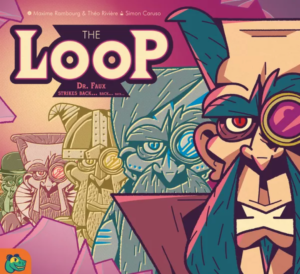
Sam says
A faithful-ish retelling of Spielberg's rubbery-sharked movie from design team Prospero Hall, Jaws has a set - two sets, actually - of pretty accessible rules that give each player their own specific abilities and agency, and tells a story. All good things, although for me I don't feel Jaws is quite as good as the other designs I've played - Pan Am is more compellingly odd, Horrified is just more fun. My issues with Jaws is that for an hour-long game two sets of rules and two set-ups feels a wee bit clunky, and also that Act II feels a little attritional: the goal here is just about numbers, and hitting them. As everyone's damage is open information, winning or losing the game can feel a bit underwhelming. But it's a canny enough thing to keep you engaged on the way, and presented with an aesthetic nod to the times of the movie itself.